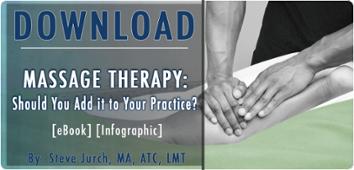Are you “keeping up with the Jones'”? ChiroEco.com reports the results from its annual survey of chiropractors and finds that many DCs are using specialization to help grow their practices, boosting patient numbers, billing and collection.
As a chiropractor, you understand the benefits of regular chiropractic care — and your patients likely do too. But if there’s one thing our annual survey indicates year after year, it’s that you also understand the importance of complementing that care with other modalities and specializations.And once again, this year’s survey shows that a large percentage of DCs have other specialists working or consulting within their practice. Those specialists ranged from LMTs, PTs, and MD/DOs to acupuncturists, fitness trainers, and LDNs.
Bringing specialists on board not only helps your patients with their care, it also helps your practice stand out from possible competitors. But the benefits don’t stop there: Clinics employing specialists see more patients per week (145 compared to 108 patients per week in nonspecialist clinics); bill more (average of $685,000 versus $372,000); and collect more (average of $429,000 versus $274,500).
As a result, clinics employing specialists averaged a higher total compensation than those practices without specialists ($133,000 and $109,500, respectively).
Practices employing specialists also attract a higher number of new patients per week (8) compared to nonspecialist clinics (5).
 |
 |
 |
Modalities offered
While most of the respondents have at least one specialist on staff, the most common specialist was the LMT, with almost 50 percent indicating they have an LMT in their clinic.
Other popular specialists include:
- Acupuncturist, 14 percent;
- MD/DO, 9 percent;
- Nutritionist, 6 percent;
- PT, 6 percent; and
- Fitness trainer, 5 percent.
And 7 percent of respondents indicated “other” for the specialists they have their in clinics.
Respondents (both clinics with specialists and clinics without) also reported that they offer a wide range of modalities, even if they do not have specialists who provide them. These modalities include:
- Chiropractic, 99 percent;
- Electrotherapy, 65 percent;
- Exercise programs, 59 percent;
- Nutrition, 58 percent;
- Massage, 52 percent;
- PT/rehab, 49 percent;
- Instrument assisted soft tissue mobilization, 38 percent;
- Laser therapy, 30 percent;
- Decompression, 28 percent;
- Weight loss programs, 27 percent;
- Acupuncture, 27 percent;
- Fitness devices, 16 percent;
- Homeopathy, 10 percent;
- Medical services, 8 percent; and
- Other, 7 percent.


